Steam Rising from Unit
Have you ever walked outside on a cold Saturday morning to check your mailbox or take out the garbage to find that your heat pump was making a loud noise or it was steaming from the top without the motor running?
Before you turn your breakers off or call the fire department, please keep reading.
On cold mornings, we receive the most calls concerning noises or “smoke” rising from the outdoor unit. Understanding your heat pump system a little better can save you from worry and unnecessary house calls.
Air Conditioning
Before we address heat pumps, let’s have a quick tutorial on how air conditioning works. Air conditioning simply removes heat from one space and transfers it to another location. We call this heat transfer. Heat is removed from your home through refrigeration tubes connected to your indoor (air handler) and outdoor units (condenser). The compressor in the outdoor unit compresses refrigerant which is moved through the indoor coils (evaporator). Air blows on the surface of the coils, and the refrigerant absorbs heat as it changes from a liquid to a gaseous state. There’s typically a 20-degree temperature difference between the air entering the coils and the air exiting them. Unwanted heat from the gas compression process is moved outside with secondary condenser coils and a second fan. As the gas cools, it changes back into a liquid and the process starts all over again.
Heat pumps
If you live in the South, you’ve probably heard about heat pumps. Heat pumps are an efficient way to heat your home. They use the same technology as your cooling system to produce adequate heat to keep you comfortable all year round. Just like air conditioners, they use heat transfer but in reverse. Heat pumps pull heat from the outside air and transfer it to your indoor coils. It takes more energy to generate heat than cool air. It should take at least 15 to 20 minutes of operation on start up to raise the indoor temperature. Heat strips help back up the heat pump to lessen the time the system needs to generate heat. Heat pumps are efficient at temperatures above 20-degrees Fahrenheit (this is why you don’t see many in the northern states).
At 28 degrees Fahrenheit, water freezes. This is where the defrost operation comes into play. Because of the reversed cycle of your system, it is now removing heat from the outside air, which causes condensation on the outdoor coils. When the temperature is low or freezing, the condensation produced by the heat exchange will freeze. When the system is on, it is pulling cold air through the wet condenser coils, causing frost to form on the coils, which slowly builds up ice and covers the unit. Ice build-up creates colder conditions which cause the heat pump to run longer cycles and hinder the efficiency of the system.
To prevent ice accumulation, your heat pump has a defrosting device on a timer. Once ice is present, the defrost sensor will close, causing a chain reaction. Most have selections of 30, 60, 90 or 120 minutes. The colder it is, the more often defrost mode is initiated.
Signs of defrost mode
Defrost happens when it’s cold outside, most often late at night or early in the morning. Chances are you have never witnessed this happen. So I would like to explain in further detail. Once the sensor detects ice forming, it sends a signal to the defrost board. With the sensor closed and the timer set for maximum operation, the outdoor fan stops completely. The reversing valve then switches position, reversing the flow of the refrigerant. Some heat is removed from inside of your home to melt the ice off the pump. During each defrosting cycle, you may hear loud noises resembling air brakes on a bus. You may notice puddles of water underneath the outdoor unit. You may see steam rising from the top of the system. Heat from the coils mixes with cold ambient air to make steam (same as when you take a hot shower). Rest assured, this is just steam and not smoke or a sign of larger problems. Believe it or not, the system is actually in air conditioning mode during the defrost cycle. This is your system working properly.
Signs of defrost problems
As long as the system is maintaining the desired temperature set on the thermostat, then there is probably no system failure.
If the defrost mode is not working correctly, it will struggle to maintain the required temperature. If you see excessive amounts of ice accumulated on the coils for more than two hours, there may be a problem. If the ice melts only when the sun comes out, that could be a concern.
If the outdoor fan motor does not come back on after at least 120 minutes after the initial defrost cycle, this can indicate actual motor failure and means your unit is in need of service.
If the heat strips are not running during the defrost cycle, cooler air can circulate through your home, which causes discomfort.
Final thoughts
The defrost control is only used in heat pumps. Each comfort system brand may have a different design, but they all serve the same purpose. Every owner with a heat pump model will encounter the cycle eventually. We get a lot of calls about these issues when the weather turns cool, so I wanted to help you be more familiar with your heat pump system.
If you have any other questions or concerns about your system, please feel free to contact me.
Kevin Calhoun
Service Manager
Recent Posts



